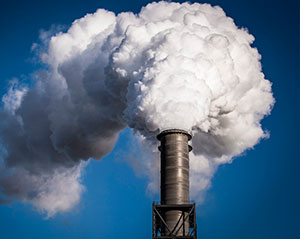Total CO2 emissions
Achievement of NDCs enables to curb global GHG emissions by 2030, driven notably by advanced economies and some large emerging countries.
Total CO2 emissions
Achievement of NDCs enables to curb global GHG emissions by 2030, driven notably by advanced economies and some large emerging countries.
-42%
Decrease in CO2 emissions from energy and industry between 2022 and 2050.
Achievement of NDCs enables to curb global GHG emissions by 2030, driven notably by advanced economies and some large emerging countries.
Announced policies and pledges, including NDCs, allow for global CO2 emissions to peak before 2030, and to decrease to around 18 GtCO2 by 2050 - as shown by our EnerBlue scenario. Advanced economies significantly reduce their emissions, as some emerging countries (notably in Asia). Emissions in Africa progress, but at a limited pace.
World
EnerFuture provides energy projections up to 2050. Our service offers clear insight into the future of energy demand, prices and GHG emissions.
More informationEnerdata's long-term MACC allow you to gain unique insight and comprehensive data from the globally recognised POLES model.
More information02
May
The Philippines’ Department of Energy (DOE) expects that nearly 4.2 GW of new power projects to be commissioned in 2024, mixing renewables and conventional sources. This includes the start of commercial operation of a record solar power capacity of nearly 2 GW (1,985 MW) that should be commissioned in 2024, and two large thermal power plants, namely the 1,320 MW (4x440 MW) Batangas CCGT power project and the 600 MW (4x150 MW) Mariveles coal-fired power project (unit 1 already operational and 3 other units under testing and commissioning). In addition, at least 590 MW of battery energy storage should be commissioned during the year.
30
Apr
The Russian Ministry of Economic Development has confirmed the official forecasts for gas production in Russia for the 2024-2027 period. Gas production in the country should reach 666.7 bcm in 2024, 695.4 bcm in 2025, 707.5 bcm in 2026 and 727.3 bcm in 2027. The ministry has also unveiled a conservative forecast alongside the baseline one, with production reaching 654 bcm in 2024 and potentially standing at 659 bcm for 2025, 666 bcm in 2026 and 671 bcm for 2027.
25
Apr
The Russian Ministry of Economic Development has lowered its forecasts for the country's crude oil export prices over the 2024-2027 period to US$65/bbl. The forecasts were cut from previous estimates of US$71.3/bbl for 2024, US$70.1/bbl for 2025 and US$70/bbl for 2026.
22
Apr
The European Union Agency for the Cooperation of Energy Regulators (ACER) has published its European LNG Market Monitoring Report (MMR). According to the report, the EU outpaced China as the largest global LNG importer in 2023, with 134 bcm of LNG imports recorded, while the United States have surpassed Qatar and Australia as the largest LNG producer, with an estimated export volume of 119 bcm in 2023. The EU’s increased demand of LNG may reach its peak during 2024 under ‘REPowerEU’ demand scenarios, at 330 bcm.



